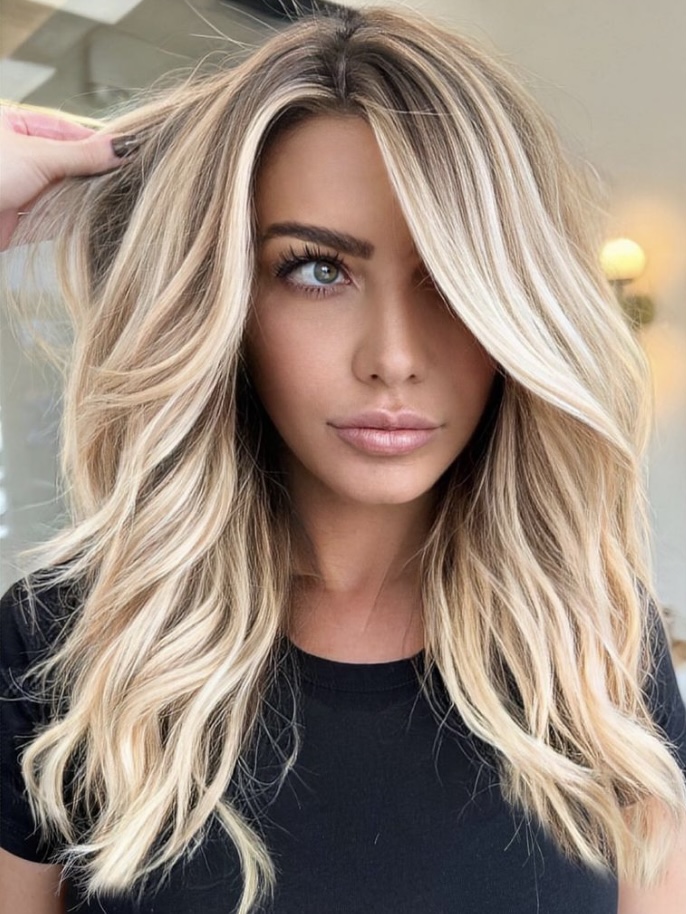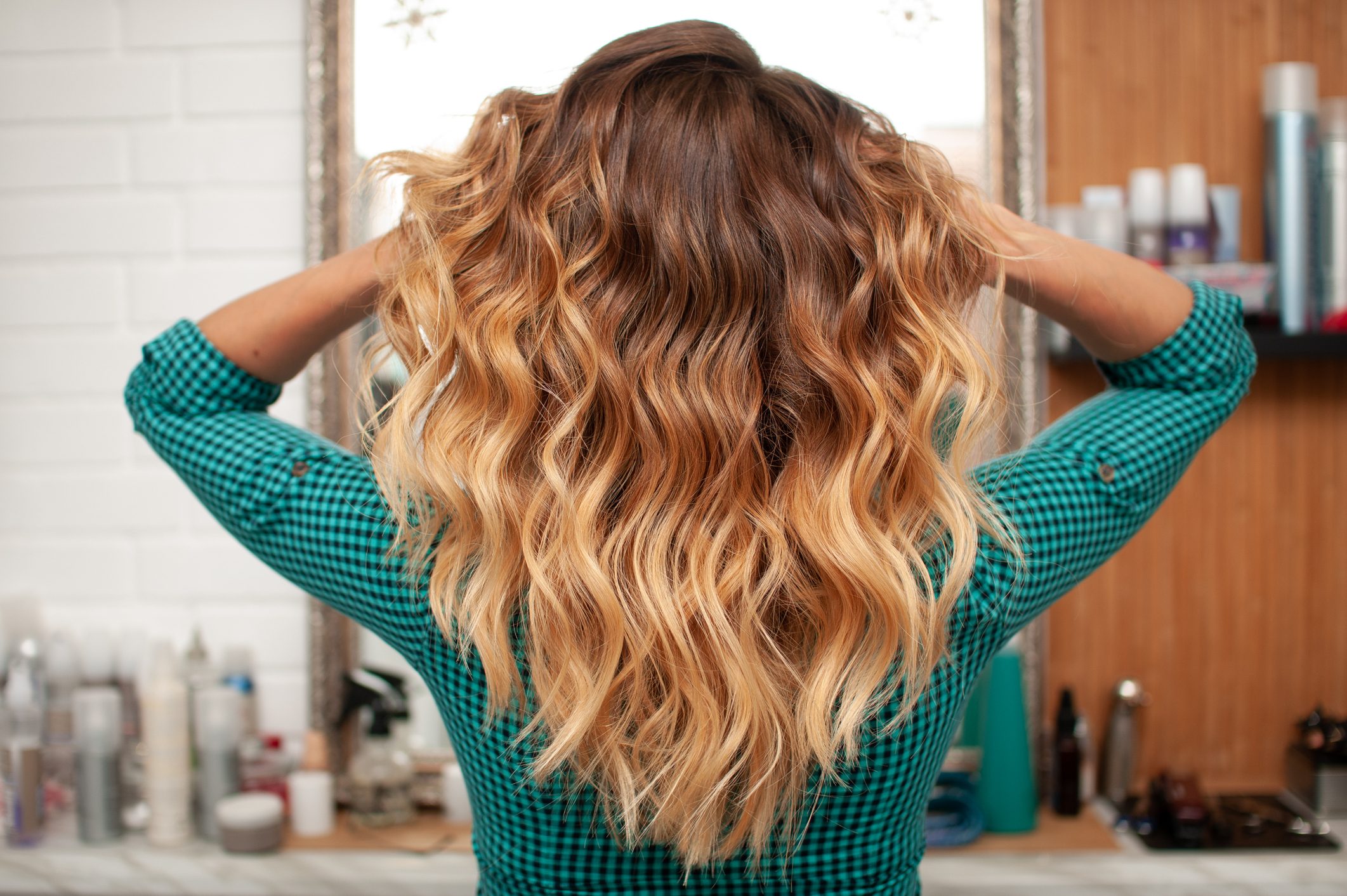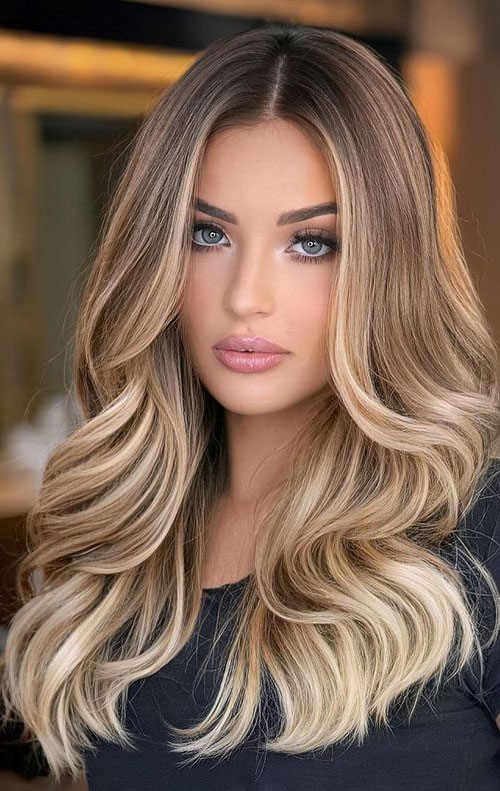Your Hair Length Chart - A Simple Guide
Have you ever sat in the salon chair, trying to tell your stylist exactly what you want for your hair, only to find the words just aren't quite right? It's a pretty common situation, honestly. You might have a picture in your head, a certain style you're hoping for, but explaining it out loud can be a bit of a challenge. What one person calls "medium," another might think of as "long," and that can lead to some real mix-ups.
That's where a good hair length chart comes into play, you know? It's a handy tool that takes away a lot of the guesswork. Instead of trying to describe a feeling or a general idea, you can actually point to something, or use terms that everyone understands. This little guide helps make sure you and your stylist are both on the very same page, which is pretty important for getting the look you truly want.
So, whether you are just thinking about a new haircut, or you are trying to grow out your hair, figuring out how to talk about length is a big deal. This information, you see, can help you pick the right products, understand what styles work for you, and even keep tabs on your hair's progress. It's all about making your hair journey a bit smoother, in a way.
- Sarah Wright Olsen Parks And Rec
- Nakoa Wolf Manakauapo Namakaeha Momoa
- Hocus Pocus Witches Names Mary
- 12 Oaks
- Russell Wilson Race
Table of Contents
- What is a Hair Length Chart and Why Bother?
- How to Use a Hair Length Chart for Communication
- Picking the Best Hair Length Chart for You
- Short Hair Lengths on the Hair Length Chart
- Medium Hair Lengths on the Hair Length Chart
- Long Hair Lengths on the Hair Length Chart
- How Can a Hair Length Chart Help You With Growing Your Hair?
- Is a Hair Length Chart Just for Women?
What is a Hair Length Chart and Why Bother?
A hair length chart, you might wonder, is that, really just a picture? Well, it's a helpful visual aid that shows different hair lengths, often using parts of the body as reference points. It gives a clear way to understand what "short," "medium," or "long" actually means in terms of hair. For instance, a "chin-length" bob is pretty easy to picture, isn't it? These charts can show you everything from a very short buzz cut to truly flowing strands, which is quite useful.
The main reason to even look at one of these charts is to clear up any mix-ups, you know? Think about that moment when you are sitting there, trying to tell your hair person exactly what you would like. Without a common language, things can get a little confusing, and that's not what anyone wants from a salon visit. A hair length chart helps you avoid those kinds of misunderstandings, making sure you get the style you are hoping for.
These charts are not just for folks getting a cut, either. Hair stylists themselves find them incredibly useful for getting inspiration and making sure they are on the same page as their clients. They can help save a lot of time and trouble, honestly, because simply looking at the chart can show you your hair's current length, no matter if your hair is straight, wavy, or curly. It's a pretty straightforward way to figure things out, you see.
How to Use a Hair Length Chart for Communication
So, how do you actually use one of these charts to talk to your stylist? Well, it's pretty simple. You can use it to figure out how long your hair actually is right now, and then use that information to explain what you want. The charts often show lengths in inches or by where the hair reaches on your body, which gives you some absolute definitions. This is quite helpful, as a matter of fact, for avoiding any confusion.
To check your hair's length, you can usually pull a strand straight down and see where it falls. For straight hair, a particular length might be, say, 12 inches. But for wavy hair, that same "look" might be 14 inches when pulled straight, and for curly hair, it could be 16 inches. This is because curls and waves spring up, making them appear shorter than their actual stretched length. So, you know, understanding these differences is a big part of getting it right.
When you are explaining your desired style to your stylist, think about using these specific length terms. Instead of saying "just a little off the ends," you could say "I'd like it to reach just past my collarbone," if that's what the chart shows. This gives your stylist a much clearer idea of what you are aiming for, and helps them pick the best cut to suit your face shape, your hair's natural feel, and what you are hoping to achieve with your look. It's about being very clear, essentially.
Picking the Best Hair Length Chart for You
When you are looking at different hair length charts, you will notice some show images of short, medium, and long haircuts on various hair types and face shapes. This is really useful, you know, because it gives you a visual guide. You can see how a certain length might look on someone with a similar hair type to yours, or a face shape that resembles your own. It helps you get a better sense of what might work for you.
The best chart for you will be one that helps you answer questions about your own hair and what you want from it. Do you want to know if your hair is short, medium, or long right now? There's a chart for that. Are you trying to figure out the right length that will truly suit your face shape, your daily life, or the style you are hoping for? A good chart can help you quickly determine that. It takes what might seem like a rather difficult choice and makes it much simpler, in a way.
Some charts will even offer ideas for different haircuts, wigs, and extensions. They are a good starting point when you are thinking about changing your look. So, you know, whether you are considering a neat bob, flowing layers, or a trendy pixie, these charts can help you find the right cut length to match your desired appearance. They really give you a lot of useful information to work with, honestly.
Short Hair Lengths on the Hair Length Chart
When we talk about short hair on a hair length chart, we are usually looking at styles that are quite close to the head. This could mean anything from a very close-cropped look, like a "buzz cut," which is nearly bald, to hair that reaches just above the ears or grazes the jawline. These lengths are often described by how much of the scalp they cover or how high they sit on the neck, you see.
A popular short style is the "pixie cut," which typically has shorter hair on the back and sides, with a bit more length on top. Then there's the "chin-length bob," which, as the name suggests, ends right at the chin. These styles can be very freeing and are often chosen for their ease of care and bold appearance. They can look really sharp, you know, and make a strong statement.
For those with very short hair, keeping the length often means more frequent trims. The hair doesn't have far to grow before it starts to change the overall shape of the style. So, if you like a precise short cut, you might find yourself visiting your stylist more often. This is just something to keep in mind, of course, when you are thinking about going short.
Medium Hair Lengths on the Hair Length Chart
Medium hair lengths on a hair length chart usually fall somewhere between the chin and the collarbone, or even a bit longer, reaching the shoulders. This is a very popular length, honestly, because it offers a lot of flexibility for styling. You can often still tie it back, but it's not so long that it gets in the way too much, which is pretty convenient for many people.
A classic medium length is the "collarbone-length" cut, where the hair gently brushes your collarbones. Another common one is the "shoulder-length" style, which, well, hits your shoulders. These lengths can be styled in many ways – straight, wavy, or curly – and they tend to suit a wide range of face shapes and hair types. They are, in a way, a good middle ground.
If you are trying to grow your hair from short to medium, the hair length chart can help you keep tabs on your progress. You can see, for example, the average growing times for moving from one length to another. This can be really encouraging, you know, to see how far you have come and how much further you need to go to reach your desired medium length.
Long Hair Lengths on the Hair Length Chart
Long hair, according to a hair length chart, goes beyond the shoulders, often reaching the middle of the back, the waist, or even longer. These lengths require more care and patience to grow and maintain, but they can be truly stunning. They offer a sense of drama and versatility, allowing for many different updos and flowing styles. It's a pretty grand look, for sure.
Lengths like "bra-strap length" (where the hair reaches the strap of a bra), "mid-back length," or "waist length" are common descriptions for long hair. Some charts even show lengths that go down to the tailbone or beyond, which are quite impressive. These longer styles can make a person feel very elegant and graceful, you know, with all that hair.
When you have long hair, looking after it becomes a bigger part of your routine. You need to think about keeping the ends healthy and preventing breakage, especially if you are aiming for truly significant length. The hair length chart can help you see where your hair is now and where you want it to be, making it easier to set goals for growth and keep your strands in good shape. It's a bit of a commitment, but often worth it.
How Can a Hair Length Chart Help You With Growing Your Hair?
If you are on a hair growth journey, a hair length chart is, you know, a really useful companion. It helps you keep track of your current hair length and lets you see how it compares to different stages of growth. This makes it easier to compare and contrast where you are versus where you want to be. It's like having a map for your hair's progress, honestly.
The chart can also show you average growing times for when you want to grow your hair out from one length to another. This can give you a more realistic idea of how long it might take to reach your hair goals. For example, if you are going from a short bob to shoulder-length hair, the chart might give you a general timeframe, which is pretty helpful for managing expectations.
Learning how to use a hair length chart is, essentially, a big part of successful hair growth and styling. It gives you the knowledge you need to talk effectively with your stylist about your growth goals and how to keep your hair healthy along the way. It helps make sure you are working together to get the look that truly complements your personality and daily life, which is a big plus.
Is a Hair Length Chart Just for Women?
You might see many examples of women's hairstyles on hair length charts, but these charts are absolutely not just for women. Hair length is a way of describing hair for anyone, regardless of gender. A man's hair, for example, is often seen as one of his good qualities, and having the right style can really make his overall appearance better. So, you know, the principles apply to everyone.
Men, too, need to describe their desired hair length to their barbers or stylists. Whether it's a very short fade, a classic side part that is a few inches long, or longer hair that reaches the shoulders, a hair length chart can provide the same clear reference points. It helps ensure that the cut matches what they are picturing in their mind, which is just as important for men as it is for women.
So, while some charts might show more examples of one gender's styles, the fundamental idea of measuring and describing hair length remains the same. It's a tool for anyone who wants to communicate clearly about their hair, pick a style that works for them, and keep their hair looking its best. It's a pretty universal concept, actually, when you think about it.
This guide offers a complete look at what a hair length chart is all about, how it can help you talk to your stylist, and how to pick the best hair length for your unique features and preferences. It also touches on how to keep your hair healthy and how long it might take to grow it out. You can also find examples of different short, medium, and long haircuts and styles for various hair types and face shapes. This information can help you understand your hair better and make choices that truly suit you.
- Duck From Chicken Little
- 3 Guy 1 Hammer
- 1916651646173532614 Fdpdablizz998
- Abby Rose Bio
- 365chula Real Name

30 Gorgeous Spring Hair Colors That Will Be Huge in 2024 - Your Classy Look

24 Hair Tips Every Woman Should Know, According to Hairstylists

50+ Trendy Hair Colour For Every Women : Cream Coffee Blonde Balayage